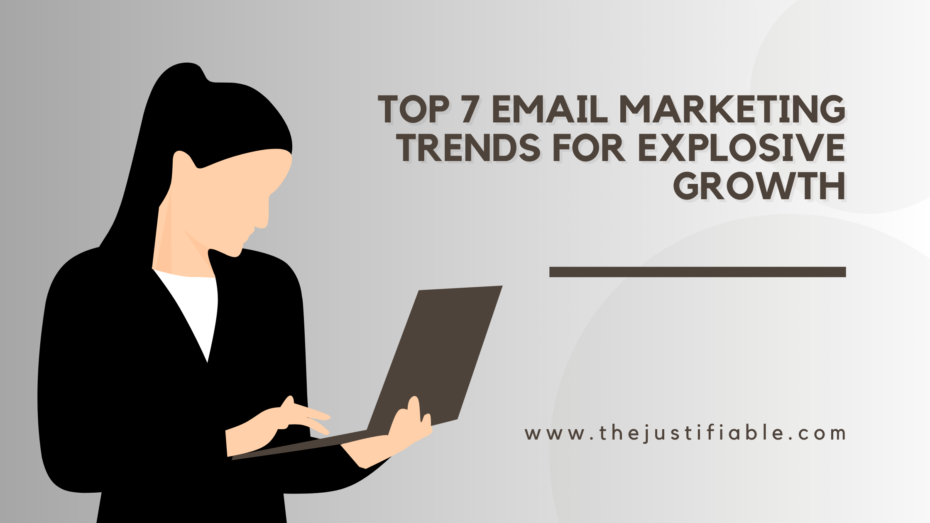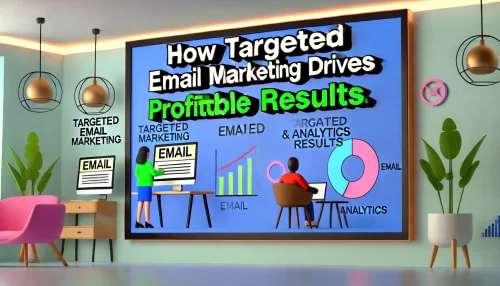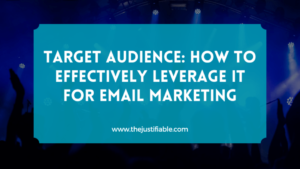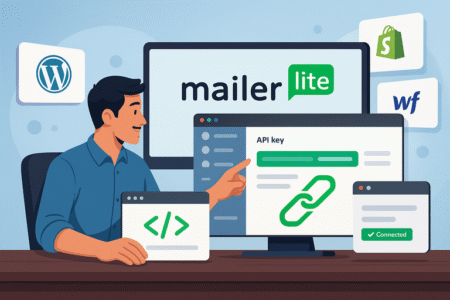Table of Contents
Are your ecommerce email campaigns falling short of expectations? Wondering how to craft emails that captivate your audience and boost your sales? This guide dives into ecommerce email marketing best practices to help you achieve higher conversion rates, improve customer engagement, and increase revenue.
Importance Of Email Marketing In Ecommerce Success
Email marketing plays a crucial role in the success of ecommerce businesses. It creates a direct communication channel with customers, fostering trust and loyalty. Leveraging ecommerce email marketing best practices helps brands build stronger relationships and drive consistent revenue growth.
How Email Marketing Fuels Ecommerce Growth
Email marketing empowers businesses to reach customers where they are—right in their inboxes. With personalized content, businesses can showcase products that resonate with customers’ preferences, encouraging engagement and increasing the likelihood of purchases. It’s like having a one-on-one conversation with each customer.
Personalized emails provide solutions to customers’ specific needs, making them feel valued. When customers feel understood, they’re more likely to trust the brand, returning repeatedly for future purchases. That’s the magic of tailored messaging in driving ecommerce growth.
I’ve observed that promotional campaigns delivered via email often have higher click-through rates compared to other channels. Why? Because emails offer a sense of exclusivity and direct access to the customer. They feel like VIP members of your brand.
I recommend using emails to announce product launches, share exclusive deals, or highlight best-sellers. These timely communications create excitement and urgency, keeping customers engaged and boosting overall sales.
Lastly, think of email as your secret weapon. When optimized, it can nurture leads, convert first-time buyers, and retain loyal customers. It’s a cost-effective, results-driven strategy every ecommerce brand should embrace wholeheartedly.
The ROI Advantage Of Effective Email Campaigns
Email marketing offers a phenomenal return on investment (ROI) for ecommerce brands. Every dollar spent on email marketing has the potential to yield $36 or more in revenue. It’s not just cost-effective—it’s a game-changer for your bottom line.
The secret lies in segmentation and automation. By targeting specific customer groups, brands ensure their messages are relevant and timely, increasing engagement and conversions. I suggest starting small, focusing on audience behaviors and gradually refining your campaigns.
Another advantage of email marketing is its scalability. Whether you’re a small business or a large corporation, email campaigns can be customized to match your goals and budget. This flexibility makes it a must-have strategy for businesses of all sizes.
Automated workflows can save time while delivering consistent value to your audience. From welcome sequences to cart recovery emails, automation ensures that no opportunity is missed, further boosting ROI and making your strategy more effective.
In my opinion, tracking metrics like open rates and click-through rates is vital. These insights show what works, allowing you to improve and achieve even greater returns on your campaigns.
Why Emails Outperform Social Media For Conversions
Emails consistently outperform social media when it comes to conversions. Unlike social platforms, emails provide a more intimate and focused environment, free from distractions like ads or competing posts. This exclusivity ensures your message gets the attention it deserves.
A subscriber’s inbox is personal, making them more likely to trust and engage with your content. Social media often feels crowded, while emails offer a direct and meaningful connection that’s hard to replicate elsewhere.
Another key reason emails shine is their ability to be tailored precisely. I’ve noticed that personalization is a game-changer. When emails reflect the customer’s preferences, they’re more likely to act—whether it’s clicking a link or completing a purchase.
Emails also allow for better tracking and analytics compared to social media. Open rates, click-through rates, and conversions can all be measured, enabling brands to refine their strategies for maximum impact. This level of insight gives businesses a clear competitive advantage.
I encourage using email campaigns to complement social media efforts rather than replacing them. Together, they can create a powerful marketing ecosystem that keeps your audience engaged across multiple touchpoints.
Building A Winning Email Marketing Strategy
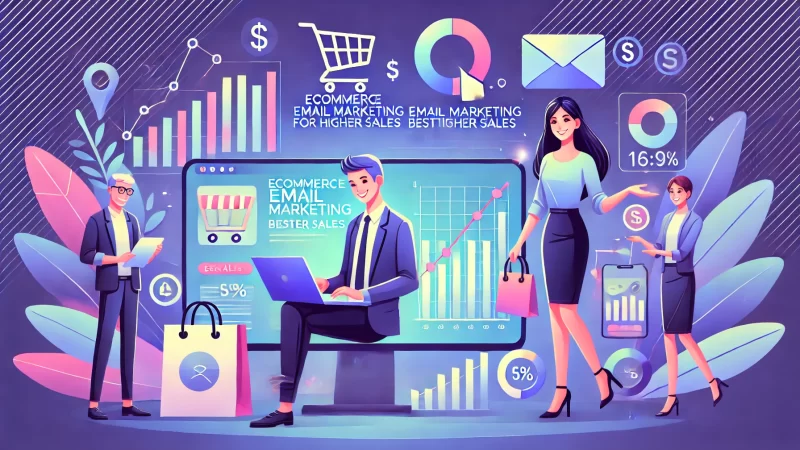
Creating an effective email marketing strategy requires careful planning and execution. By focusing on ecommerce email marketing best practices, you can craft campaigns that resonate with your audience, deliver value, and ultimately boost your sales performance.
Setting SMART Goals For Ecommerce Email Campaigns
SMART goals—Specific, Measurable, Achievable, Relevant, and Time-bound—serve as the foundation of a successful email strategy. Clear objectives guide your efforts and ensure your campaigns are focused on driving real results.
Start by identifying what you want to achieve. Is it higher open rates, more sales, or increased website traffic? Define these goals in measurable terms, like boosting open rates by 15% within three months. It’s easier to track progress with such clarity.
I suggest focusing on achievable milestones to avoid feeling overwhelmed. For instance, instead of aiming for a 50% click-through rate immediately, work incrementally towards smaller, realistic improvements. This approach keeps your team motivated.
Make sure your goals align with broader business objectives. For example, if your ecommerce store focuses on sustainable products, craft campaigns that emphasize eco-friendly practices. This alignment creates a consistent and authentic brand message.
Finally, set deadlines to maintain momentum. A time-bound approach encourages accountability and ensures campaigns are executed efficiently. Regularly review progress to stay on track and celebrate small wins along the way.
Understanding Your Audience For Personalization
Understanding your audience is the key to effective personalization. When you know what your customers want, you can craft messages that resonate with them, making your campaigns far more impactful.
Start by analyzing customer behavior, like browsing history or past purchases. This data provides valuable insights into their preferences and shopping habits. I recommend using these patterns to inform your email content and offers.
Another powerful tool is surveys. Asking customers about their interests can uncover preferences you may not have considered. This dialogue fosters trust and strengthens the relationship between your brand and its audience.
Segment your email list based on demographics, purchase history, or engagement levels. Segmentation ensures each customer receives content that feels tailored specifically to them. I’ve found this approach boosts engagement and reduces unsubscribe rates.
Finally, test different personalization strategies to see what resonates best. Whether it’s addressing customers by name or showcasing products based on their browsing history, find what works and refine it continuously.
Crafting A Clear Brand Voice For Emails
A consistent brand voice is essential for building trust and recognition. Your email tone should reflect your brand’s personality while aligning with customer expectations, ensuring every message feels authentic and relatable.
Begin by defining your brand’s core values and mission. Are you playful, professional, or somewhere in between? I advise using these traits as a guide for crafting your email copy. Consistency is key—customers should recognize your tone instantly.
Your language should also match your audience. If your target demographic is young and tech-savvy, a casual tone might work best. For professional audiences, a more formal approach may resonate better. I suggest adapting without losing authenticity.
Use stories to connect emotionally with your audience. For example, sharing how your products are made or highlighting real customer experiences makes your emails more engaging and human. These personal touches foster deeper connections.
Finally, maintain clarity in every message. Avoid jargon or overly complex language. I believe simplicity enhances readability and ensures your message is understood. This clear communication builds trust and keeps your audience coming back.
Optimizing Your Email Design And Layout
Creating well-structured and visually appealing emails is essential for engagement. A polished layout enhances readability and ensures your message is effectively communicated. Incorporating ecommerce email marketing best practices in design can significantly improve user experience and boost conversions.
Creating Responsive Emails For Mobile Users
With a large percentage of users accessing emails on mobile devices, responsive design is a must. Ensuring emails look great on any screen size improves engagement and ensures your message gets the attention it deserves, no matter the device.
Start by using a single-column layout, which adapts well to small screens. This approach avoids overcrowding and ensures all key elements are visible. I suggest testing your designs on different devices to confirm their responsiveness.
Include large, easy-to-click buttons for calls-to-action (CTAs). Mobile users appreciate convenience, and clear CTAs make it simple for them to take the desired action, whether it’s visiting your site or making a purchase.
Keep your font sizes legible. Tiny text can be frustrating to read on mobile devices, leading to missed opportunities. I recommend using a minimum font size of 14px for body text and slightly larger for headlines.
Minimize large images or heavy graphics that may slow load times. Optimized visuals keep your emails looking sharp while maintaining quick loading speeds. This attention to detail makes a huge difference for mobile users.
Designing Visually Appealing Templates
A visually attractive email grabs attention and keeps readers engaged. The right balance of color, typography, and images creates a professional look that reinforces your brand identity while delivering your message effectively.
Choose a color palette that complements your brand. Consistency in colors strengthens brand recognition. I believe subtle accents can emphasize important elements like CTAs or offers, guiding readers’ focus naturally.
Use high-quality images to enhance the visual appeal. Whether showcasing products or creating a mood, clear and vibrant images add value. I suggest including alternative text for images to ensure accessibility for all recipients.
Whitespace is your friend. A clutter-free layout improves readability and ensures your message isn’t lost in visual noise. It also gives your emails a clean, modern aesthetic that readers find appealing.
Incorporate your logo and branding elements at the top of the email. This immediately establishes familiarity and builds trust. I recommend keeping these elements consistent across all your emails to reinforce brand identity.
Using Effective CTAs To Drive Actions
A strong call-to-action (CTA) motivates readers to take the next step, whether it’s visiting your website or making a purchase. The placement, design, and wording of your CTAs can make or break your email’s success.
Place CTAs strategically within your email. I suggest including one near the top, another in the middle, and one at the end. This ensures readers encounter your call-to-action regardless of how far they scroll.
Make CTAs visually distinct using contrasting colors and bold text. A button that stands out draws attention and encourages clicks. I’ve noticed that clearly labeled buttons often outperform text links in driving actions.
The wording matters just as much. Phrases like “Shop Now,” “Claim Your Offer,” or “Learn More” are direct and action-oriented, urging readers to act. Avoid vague or generic language that fails to inspire action.
Test different CTA designs and placements to find what works best. Experimenting allows you to optimize for clicks and ensure your email campaigns are consistently performing at their peak.
Crafting High-Converting Email Copy
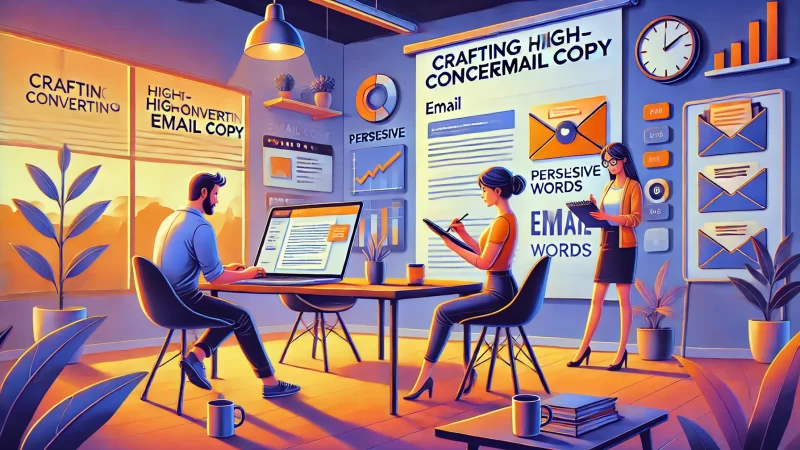
Well-written email copy has the power to turn interest into action. Clear, compelling, and customer-focused messaging helps you build trust and drive conversions. Following ecommerce email marketing best practices ensures your copy resonates with your audience.
Writing Attention-Grabbing Subject Lines
Your subject line is the gateway to your email. A compelling subject grabs attention, piques curiosity, and encourages the recipient to open your email. It’s the first impression your campaign makes—so make it count.
Keep subject lines short and impactful. I suggest sticking to 40 characters or less to ensure they’re fully visible on mobile devices. Shorter subject lines also grab attention faster in crowded inboxes.
Use action-oriented language that hints at the value inside. For example, “Get 20% Off Today Only!” creates urgency and excitement. I recommend incorporating numbers or power words to make the subject stand out even more.
Personalization boosts open rates. Including the recipient’s name or referencing their recent activity makes the subject feel tailored. This connection increases the likelihood of your email being noticed and opened.
Avoid spammy phrases like “Free!” or “Act Now!” excessively. Such words can trigger spam filters or come across as untrustworthy. Instead, I suggest being authentic and creative to build trust with your audience.
Structuring Emails With Compelling Content
A well-structured email ensures your message is clear and engaging. Break your content into sections with headings and bullet points for easy readability. This format keeps readers engaged and guides them seamlessly through the email.
Start with a strong opening that grabs attention immediately. I suggest addressing the recipient’s needs or offering a solution to a common problem. This creates a connection and encourages them to keep reading.
Use concise paragraphs that deliver value. Overly long emails can overwhelm readers. Instead, I recommend focusing on key points and using links to direct readers to more information if needed.
End with a call-to-action that ties everything together. For example, if your email introduces a product, include a button to shop now. I’ve seen this approach improve click-through rates significantly.
Add a postscript (P.S.) for one last push. Many readers skim emails, and a P.S. stands out. Use it to reiterate your main point or offer, creating a final opportunity to engage the recipient.
Leveraging Psychological Triggers For Persuasion
Psychological triggers tap into emotions and drive action. When used ethically, these strategies make your emails more persuasive, encouraging readers to click, buy, or engage. Understanding what motivates your audience is key.
Scarcity is a powerful motivator. Limited-time offers or low-stock alerts create urgency, prompting readers to act quickly. I suggest including phrases like “Only 3 left in stock!” to inspire immediate action.
Social proof builds trust. Highlighting customer reviews or testimonials reassures readers that others value your product. I’ve found that adding star ratings or customer quotes can significantly boost credibility and conversions.
Personalized recommendations show you understand your customers. Tailoring product suggestions based on browsing or purchase history makes emails feel relevant and useful. This strategy often leads to higher engagement.
Use visuals to amplify your message. For instance, images of happy customers using your product can evoke positive emotions, encouraging readers to envision the same experience for themselves.
Segmenting Your Email List For Better Engagement
Segmenting your email list allows you to send personalized and relevant content to specific groups of customers. By implementing ecommerce email marketing best practices, segmentation helps boost engagement, increase click-through rates, and foster stronger connections with your audience.
Benefits Of Segmentation For Ecommerce Stores
Segmentation enhances the effectiveness of your email campaigns by tailoring content to match customer interests. When emails feel relevant, recipients are more likely to engage, making segmentation a powerful tool for driving ecommerce success.
Targeted emails build trust with your audience. Customers appreciate content that reflects their needs or preferences, and I believe this personal touch sets your brand apart, making them more inclined to interact with your emails.
Segmentation also improves conversion rates. Sending product recommendations based on past purchases, for instance, encourages repeat business. I suggest using purchase history to segment your list effectively and provide highly relevant offers.
It reduces unsubscribe rates too. Sending irrelevant content frustrates readers, but segmentation ensures they only receive emails that matter to them. Keeping your audience happy and engaged is essential for maintaining a healthy email list.
I’ve noticed that segmented campaigns often outperform generalized ones in metrics like open rates and click-through rates. This proves that understanding your audience and tailoring your approach truly pays off.
Using Customer Behavior To Segment Effectively
Segmenting based on customer behavior helps deliver hyper-personalized content. Actions like browsing history, purchase patterns, and email engagement provide valuable insights to guide your segmentation strategy and keep your emails relevant.
Start with browsing behavior. Customers who frequently view specific product categories are likely interested in related items. I suggest creating segments based on these preferences and sending tailored product recommendations or promotions.
Purchase frequency is another key metric. For example, loyal customers might appreciate exclusive rewards, while less frequent buyers may respond better to discounts or reminders. Adapting to their buying patterns can reignite their interest.
Email engagement reveals a lot about your audience. Subscribers who consistently open and click on your emails are prime candidates for upselling or cross-selling campaigns. I recommend treating these engaged customers as high-priority leads.
Abandoned cart behavior is a goldmine for segmentation. Sending targeted reminders to customers who left items in their carts encourages them to complete their purchases. This small effort can significantly increase conversions.
Tools For Automating Segmentation Efforts
Automation tools simplify the segmentation process, saving time while ensuring precision. With the right tools, you can automatically group subscribers based on behavior, preferences, or demographics, making your email marketing more efficient and effective.
Many email platforms offer built-in segmentation features. Tools like Mailchimp or Klaviyo allow you to create dynamic lists that update automatically. I recommend exploring their capabilities to tailor your campaigns effortlessly.
Behavioral triggers enhance automation. For instance, if a customer views a specific product multiple times, your tool can automatically add them to a segment for targeted promotions. This proactive approach keeps your emails relevant and timely.
Integrating segmentation tools with your ecommerce platform is invaluable. Platforms like Shopify or BigCommerce often sync seamlessly with email marketing software, ensuring your data is always up-to-date and accurate.
Don’t forget to test and refine your segments. Automation tools often provide analytics to evaluate performance. I suggest using this data to tweak your strategies and ensure you’re meeting your audience’s evolving needs.
Timing Your Emails For Maximum Impact
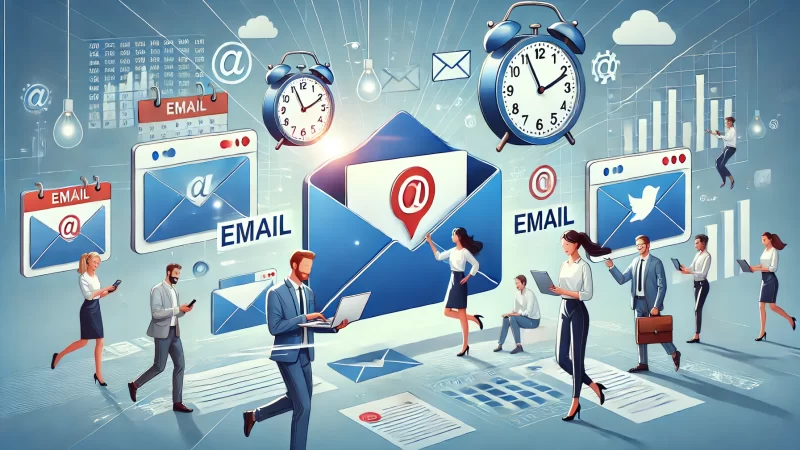
Perfectly timed emails are key to maximizing engagement. Sending emails at the right moments ensures your audience is more likely to open, read, and act on them, making it a crucial aspect of ecommerce email marketing best practices.
Identifying The Best Days To Send Ecommerce Emails
Choosing the right day to send emails can significantly impact their success. Some days naturally yield higher engagement rates, so understanding your audience’s habits is vital for optimal results.
Midweek days like Tuesday or Wednesday often see higher open rates. These are productive days when people are more likely to check their emails. I advise testing different days to pinpoint what works best for your audience.
Weekend emails can also be effective for certain segments. For example, shoppers browsing for leisure might engage more on Saturdays or Sundays. It depends on your product and target demographic, so experiment accordingly.
Avoid Mondays if possible. People tend to be overwhelmed with work and less receptive to marketing emails. Sending on days when inboxes are less crowded improves your chances of standing out.
Seasonal trends matter too. During holidays or sale events, customers expect promotional emails. Timing these campaigns strategically, such as on Black Friday or just before major holidays, can significantly boost conversions.
Analyzing Time Zones For Global Customers
For brands with a global audience, understanding time zones is essential. Sending emails at the wrong time can result in missed opportunities, so syncing campaigns with recipients’ local times is crucial.
Use email platforms that support time zone segmentation. Tools like Klaviyo or ActiveCampaign allow you to schedule emails according to the recipient’s time zone, ensuring they land at the perfect moment.
Morning emails typically perform well, especially between 9-11 AM. I recommend experimenting with this window to catch customers as they start their day and are most likely to check their inbox.
Evening emails can also be effective, particularly for leisure products or promotions. Sending between 6-8 PM captures customers as they wind down, increasing the likelihood of engagement.
Analyze your existing data to identify patterns. Your email platform’s analytics often reveal when your audience is most active, guiding you to fine-tune your timing for maximum impact.
Leveraging Data To Perfect Send Times
Data-driven insights are invaluable for optimizing email timing. Monitoring open rates, click-through rates, and engagement trends helps you identify the best times to reach your audience effectively.
Review past campaign performance. If certain emails achieved higher engagement, analyze when they were sent and replicate that timing for similar campaigns. I believe historical data provides a reliable benchmark.
Segment your audience by activity level. Engaged customers may respond well to morning emails, while less active ones might need a different approach. Tailoring send times for each segment ensures higher overall engagement.
A/B testing is a must. Test various send times within your campaigns to discover what works best. I suggest keeping the variables consistent to isolate the impact of timing on performance.
Rely on predictive analytics if available. Some platforms use AI to determine optimal send times based on user behavior. Leveraging this technology can take the guesswork out of timing your emails.
Using Automation To Enhance Email Marketing
Automation simplifies email marketing while ensuring consistent, timely communication with your audience. Leveraging ecommerce email marketing best practices, automation tools help save time, reduce effort, and deliver tailored messages that engage and convert leads effectively.
Automating Welcome Series To Capture Leads
A welcome series is your brand’s first impression, introducing new subscribers to your products and values. Automation ensures these emails reach new leads promptly, fostering engagement and building trust from the very beginning of your relationship.
Start with a warm and personalized welcome email. Acknowledge the subscriber’s decision to join and highlight what they can expect from your emails. I suggest including an exclusive offer or discount to encourage immediate interaction with your brand.
Follow up with an educational email. Share tips, product benefits, or a brand story that resonates. This builds credibility and provides value without being overly promotional, creating a sense of connection with the subscriber.
The third email can focus on social proof. Highlight testimonials, user-generated content, or reviews to build trust. I believe this strategy reinforces your credibility and assures subscribers of your product’s value.
Finally, ensure consistency in tone and visuals. Aligning your welcome series with your brand identity helps create a cohesive experience, leaving a positive and lasting impression on new leads.
Setting Up Cart Abandonment Email Sequences
Cart abandonment emails are powerful tools to recover lost sales. Automation allows you to re-engage potential buyers by reminding them of the items left in their carts, offering incentives, and simplifying the checkout process.
Send the first email within hours of abandonment. A friendly reminder encourages customers to revisit their cart while your brand is still fresh in their minds. I suggest emphasizing urgency to nudge them toward action.
Include a second email highlighting the benefits of the products. Use vivid descriptions or customer testimonials to reignite interest. I’ve seen this approach work well, especially when paired with visuals of the abandoned items.
For the third email, consider offering a limited-time discount or free shipping. These incentives often convert hesitant shoppers. Just ensure the offer is time-sensitive to create urgency and encourage a quick decision.
Lastly, track the performance of your sequence. Monitoring open rates, click-through rates, and conversions provides insights to refine your strategy and make future campaigns even more effective.
Streamlining Post-Purchase Follow-Ups
Post-purchase emails are an opportunity to nurture relationships and increase customer loyalty. Automating these messages keeps your audience engaged, encouraging repeat business and positive word-of-mouth.
Send a thank-you email immediately after purchase. Expressing gratitude shows your appreciation and sets a positive tone for future interactions. I recommend including order details and shipping information for added convenience.
Follow up with product care tips or tutorials. Helping customers get the most out of their purchase enhances satisfaction and builds trust. This gesture also demonstrates your commitment to their experience.
Consider requesting feedback in a third email. A short survey or product review request helps you gather insights while showing customers their opinions matter. I’ve found this fosters a sense of community around your brand.
Lastly, introduce related products or exclusive offers. Tailored suggestions based on their purchase encourage further engagement and sales, ensuring your brand stays top-of-mind for future needs.
Increasing Engagement Through Personalization
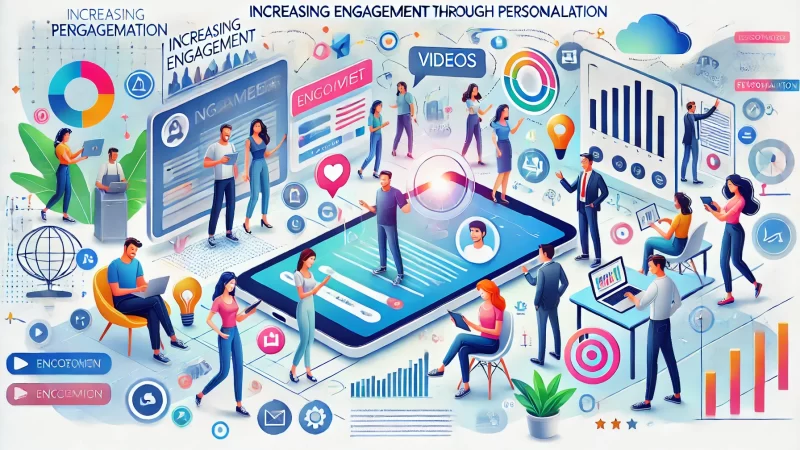
Personalization transforms email marketing into a meaningful dialogue between your brand and its audience. By tailoring messages to individual preferences, you can boost engagement, build trust, and create a memorable customer experience that drives loyalty.
Dynamic Content Based On User Preferences
Dynamic content adapts to individual user preferences, ensuring every email feels relevant and engaging. This strategy enhances personalization by delivering content that aligns with a subscriber’s unique interests and behaviors.
Start with personalized product recommendations. I suggest using browsing history or wish lists to highlight items they’re likely to love. This approach demonstrates your understanding of their preferences and encourages exploration.
Incorporate location-based content where applicable. Sharing region-specific offers or event updates adds a personal touch that resonates with customers. This simple step makes your emails feel highly relevant and timely.
Segment your audience further based on activity. For instance, highlight trending products for engaged subscribers or special promotions for inactive ones. I believe this strategy maximizes engagement across various customer segments.
Include countdown timers or real-time updates to create urgency. Whether promoting a sale or showcasing limited stock, dynamic elements draw attention and prompt action, making emails more interactive and effective.
Addressing Customers By Name For Connection
Using a customer’s name in emails creates an immediate sense of connection. It’s a small detail that humanizes your communication, making subscribers feel valued and appreciated by your brand.
Start with the subject line. Including a recipient’s name here grabs attention and makes the email feel personal. I suggest pairing this with a compelling message to encourage opens.
Continue personalization in the body text. Addressing subscribers by name throughout the email creates a conversational tone. It’s like speaking directly to them, which fosters a stronger relationship.
Use names in product recommendations or promotions. For instance, “John, we think you’ll love these picks” makes the email feel tailor-made. I’ve found this approach boosts engagement and click-through rates.
Combine names with other personalization tactics. For example, referencing their recent activity along with their name makes the communication even more relevant and impactful.
Recommendations Based On Purchase History
Purchase history provides valuable insights for crafting personalized recommendations. Tailoring product suggestions to previous purchases keeps your brand top-of-mind and increases the likelihood of repeat business.
Highlight complementary products. If a customer recently bought a camera, suggest accessories like tripods or lenses. I believe these relevant recommendations enhance the value of your emails and improve the customer’s experience.
Use seasonal or event-based suggestions. For example, if they bought workout gear, send recommendations for summer fitness apparel. This approach keeps your emails timely and aligned with their interests.
Incorporate loyalty programs into recommendations. Remind customers of points they can redeem or exclusive rewards available for additional purchases. This motivates them to explore more products while strengthening brand loyalty.
Personalize promotions for high-value customers. Offering exclusive discounts or early access to sales based on their purchase history makes them feel appreciated and encourages continued engagement.
Encouraging Customer Loyalty Through Emails
Email marketing is a powerful way to build long-term relationships with customers. Implementing strategies like rewards programs, exclusive discounts, and showcasing reviews keeps customers engaged, strengthens their trust, and motivates repeat purchases, which boosts your business’s overall performance.
Creating Reward Programs For Repeat Purchases
Reward programs incentivize loyalty by offering tangible benefits for repeat purchases. These programs make customers feel appreciated, encouraging them to return and buy more. Effective reward emails should be engaging, clear, and designed to highlight the value of your program.
Start with a welcome email introducing the program. Explain how it works, including how points are earned and redeemed. I suggest keeping the message concise while emphasizing the rewards they’ll enjoy. Make it feel exciting and rewarding right away.
Include periodic updates about their points balance. Emails showing progress toward rewards motivate customers to complete purchases. These updates also serve as a reminder that they’re close to earning something valuable, driving repeat engagement.
Use reward program emails to feature special promotions. For example, double-point days or early access to sales for members create urgency and encourage immediate action. I recommend highlighting these perks as exclusive to loyal customers.
Celebrate milestones like anniversaries or birthdays with bonus points. A personalized message with extra rewards makes the customer feel valued and appreciated, deepening their connection to your brand.
Sending Exclusive Discounts To Subscribers
Exclusive discounts create a sense of privilege for subscribers, making them more likely to engage and purchase. Using segmentation ensures these discounts are tailored to specific customer groups, maximizing their impact and increasing sales.
Introduce discounts with a personal touch. Emails addressed to the recipient with phrases like “Just for you” make the offer feel unique. I suggest pairing this with visually appealing designs to capture attention immediately.
Use scarcity to drive urgency. Highlight that the discount is for a limited time, encouraging subscribers to act quickly. Phrases like “24-hour exclusive deal” create excitement and prompt immediate action.
Offer tiered discounts based on purchase history. For example, provide higher discounts to frequent buyers to reward their loyalty while encouraging infrequent shoppers to engage. This tailored approach makes customers feel individually valued.
Highlight savings clearly in the email. Bold fonts, contrasting colors, or large numbers make the discount stand out. I recommend ensuring the value is unmistakable, so recipients immediately see the benefit of the offer.
Highlighting Customer Reviews In Campaigns
Featuring customer reviews in email campaigns builds trust and reinforces the quality of your products or services. Positive testimonials act as social proof, encouraging recipients to make confident purchasing decisions based on others’ experiences.
Showcase real reviews with photos or names (with permission). These humanize your emails and make them more relatable. I’ve found that adding visual elements like customer selfies increases the credibility and impact of testimonials.
Include star ratings for specific products. Highlighting top-rated items helps recipients quickly identify popular choices, guiding their buying decisions. I suggest making these ratings prominent within the email layout for easy visibility.
Feature reviews in segmented campaigns. For instance, show testimonials from similar demographic groups or industries to create a stronger connection. This targeted approach enhances relevance and boosts engagement.
Combine reviews with a call-to-action. After presenting glowing testimonials, encourage readers to explore products or services directly. A well-placed “Shop Now” or “Learn More” button ties the review to a tangible next step.
A/B Testing For Email Campaign Optimization
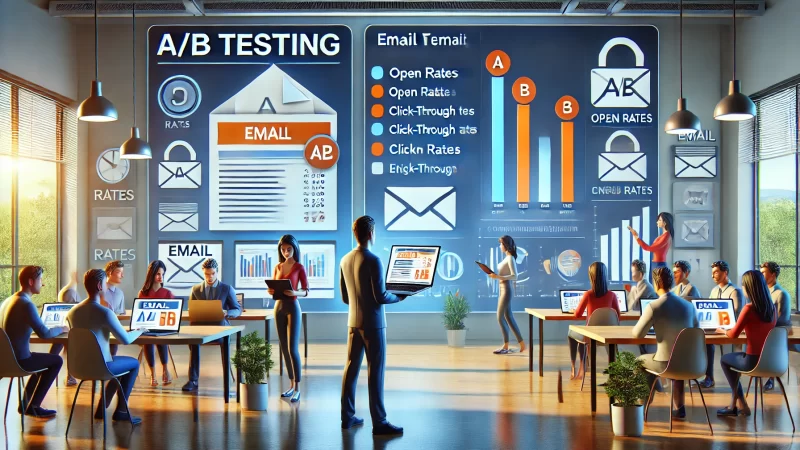
A/B testing is essential for refining email campaigns and maximizing their effectiveness. By experimenting with different elements, you can identify what resonates most with your audience and use data-driven insights to continually improve performance.
Testing Subject Lines To Improve Open Rates
Subject lines are the first impression of your email, making them a critical factor in open rates. Testing variations helps pinpoint what grabs attention and entices recipients to explore your content further.
Start with different tones or styles. Try one subject line that’s playful and another that’s more formal. I suggest keeping both concise and relevant, as overly long subject lines can get cut off, especially on mobile devices.
Experiment with personalization. Test subject lines that include the recipient’s name or reference their recent activity. For example, “John, Your Favorite Item Is Back in Stock!” creates a sense of relevance that piques curiosity.
Include numbers or percentages in your tests. Subject lines like “Save 20% Today!” often perform better because they’re specific and highlight value. Test variations to see which phrasing resonates with your audience.
Monitor the results closely. I recommend focusing on open rates and engagement metrics to determine which subject lines are most effective and using those insights to shape future campaigns.
Analyzing Content Variations For Better Results
Testing email content reveals what layout, tone, and messaging connect best with your audience. A/B testing different elements within the body of your emails can lead to higher engagement and improved conversions.
Experiment with varying email lengths. Short, punchy emails may work better for time-sensitive offers, while longer, detailed messages might be ideal for storytelling or product explanations. I suggest trying both to see what resonates.
Test different value propositions. Highlight product benefits in one email and promotional discounts in another. Comparing these approaches helps identify which motivates your audience to act.
Play with visuals and text balance. Emails heavy on graphics might appeal to some readers, while others prefer text-heavy content. I’ve noticed that finding the right mix of visuals and text improves overall engagement.
Incorporate interactive elements like polls or GIFs in one variation. These features make your emails more engaging and memorable, helping you stand out. Observe how your audience interacts to decide if this strategy fits your brand.
Evaluating CTAs For Higher Click-Through Rates
Call-to-action (CTA) buttons guide your readers toward desired actions, making them crucial for achieving your campaign goals. Testing different CTA designs, placements, and messages helps refine this vital component of your emails.
Try different phrasing for CTAs. Compare action-oriented phrases like “Shop Now” versus “Discover More” to see which resonates. I recommend keeping the message simple yet impactful, clearly stating the benefit of clicking.
Experiment with button design. Test variations in color, size, and placement to ensure the CTA stands out. For example, a brightly colored button with white text often draws more attention than a subtle design.
Position CTAs strategically within the email. Test one version with the button at the top and another with it at the bottom. I believe this insight helps you identify the placement that maximizes clicks.
Monitor click-through rates and follow through with conversions. A high click rate means the CTA is working, but it’s important to evaluate how many of those clicks lead to actions like purchases or sign-ups.
Monitoring Metrics To Track Performance
Tracking email marketing performance is essential for refining strategies and improving results. By focusing on key metrics and leveraging tools effectively, businesses can ensure their campaigns align with ecommerce email marketing best practices and achieve their goals.
Key Metrics To Measure Email Success
Understanding key metrics helps identify what’s working in your campaigns and where improvements are needed. Metrics like open rates, click-through rates, and conversions provide actionable insights into audience behavior and the effectiveness of your content.
Open rates indicate how compelling your subject lines are. A strong subject line grabs attention and encourages recipients to engage. I recommend testing variations to discover the style or tone that resonates most with your audience.
Click-through rates (CTR) reveal how engaging your email content is. High CTRs indicate that your audience finds the content valuable and relevant. Clear CTAs and interactive elements can significantly boost this metric.
Conversions measure the ultimate success of your email. Whether it’s a purchase, sign-up, or download, tracking conversions helps you understand the return on your efforts. I suggest aligning campaigns with specific conversion goals for better focus.
Unsubscribe rates are a warning sign. A rising rate may indicate irrelevant content or over-communication. Regularly monitoring this metric helps you adjust strategies to retain subscribers and maintain a positive relationship with your audience.
Using Analytics Tools For Insights
Analytics tools offer valuable data for assessing campaign performance. These platforms simplify tracking metrics and provide insights to refine your email marketing strategy and meet your audience’s needs more effectively.
Platforms like Mailchimp or Klaviyo provide detailed analytics. They display metrics like open rates, CTRs, and bounce rates in an easy-to-understand format. I recommend exploring these dashboards to monitor trends and optimize your campaigns.
Heatmaps can highlight areas of interest. Tools that track where readers click within emails help identify which elements draw attention. Use this data to optimize layouts and position important information effectively.
Automation tools also offer insights. For instance, tracking workflows like cart abandonment emails shows which sequences drive the most conversions. This helps you focus on areas that yield the highest returns.
Set up reporting schedules for consistent monitoring. Weekly or monthly reports keep you informed about performance trends. I suggest using these updates to adjust strategies proactively and ensure ongoing improvement.
Benchmarking Results Against Industry Standards
Benchmarking compares your email performance to industry averages, helping you set realistic goals and understand how you measure up. This context provides valuable insights for improving your strategy and achieving better results.
Research industry-specific benchmarks. Different sectors have varying email performance averages. I recommend comparing metrics like open rates and CTRs within your industry for a more accurate understanding of your success.
Identify areas where you excel. For instance, if your open rates are higher than average, focus on replicating those strategies across other campaigns. Recognizing strengths helps you build on successful tactics.
Analyze underperforming areas against benchmarks. If your CTR is below average, consider revisiting your CTAs or content structure. I believe small adjustments, like clearer button text, can lead to significant improvements.
Keep an eye on trends over time. Benchmarks may shift due to changing audience behavior or industry patterns. Regularly updating your comparisons ensures your strategies remain competitive and aligned with current standards.
Avoiding Common Email Marketing Mistakes
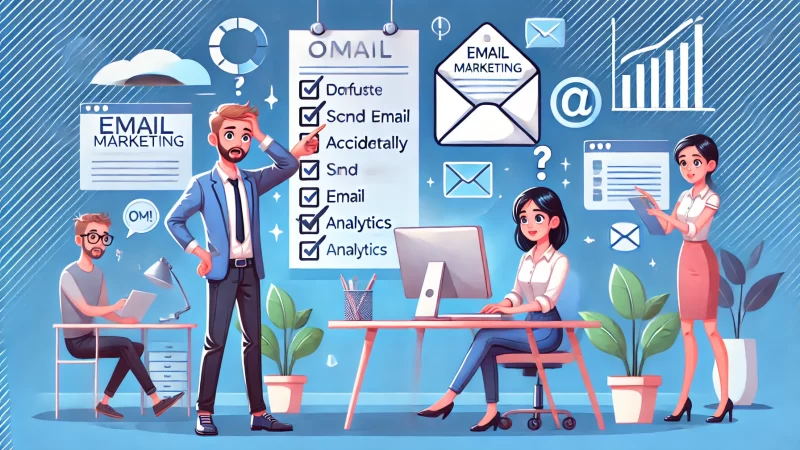
Avoiding common pitfalls is crucial for maintaining effective email marketing campaigns. Missteps like overloading subscribers, non-compliance with regulations, or delivering generic content can harm engagement and reduce the overall success of your efforts.
Pitfalls Of Overloading Customers With Emails
Bombarding customers with too many emails can lead to fatigue and higher unsubscribe rates. Striking the right balance in frequency keeps your audience engaged and prevents them from feeling overwhelmed or annoyed.
Stick to a consistent schedule. Irregular or overly frequent emails can frustrate subscribers. I suggest setting a predictable cadence, like weekly or biweekly, to maintain engagement without overwhelming your audience.
Segment your list to tailor frequency. Active subscribers might appreciate more updates, while less engaged ones prefer fewer emails. Targeting based on engagement levels ensures relevance and reduces the risk of losing subscribers.
Focus on quality over quantity. Sending fewer, high-value emails is more effective than frequent, generic ones. I recommend prioritizing relevance and personalization to make every message count.
Monitor unsubscribe rates carefully. If they increase after certain campaigns, it may indicate you’re overloading your audience. Use this feedback to adjust your strategy and better align with subscriber preferences.
Ensuring Compliance With Email Marketing Laws
Compliance with email marketing regulations protects your brand and fosters trust with your audience. Laws like GDPR and CAN-SPAM require adherence to rules regarding consent, content, and transparency in your campaigns.
Always obtain explicit consent before adding subscribers to your list. I advise using double opt-ins to confirm interest and ensure compliance with regulations. This also helps maintain a quality list.
Include clear unsubscribe options in every email. Making it easy to opt-out respects customer choice and aligns with legal requirements. I suggest placing the link prominently at the bottom of your emails.
Avoid misleading subject lines or headers. Transparency builds trust and prevents legal issues. Keep your content honest and aligned with the expectations you set during the subscription process.
Stay updated on regulations. Laws may change, and staying informed ensures your campaigns remain compliant. I recommend periodic reviews of your practices to align with current requirements.
Avoiding Generic Content That Hurts Engagement
Generic, impersonal content alienates subscribers and diminishes engagement. Personalization and relevance are essential for maintaining interest and ensuring your emails resonate with your audience.
Address recipients directly. Using their name or referencing recent activity creates a personal connection. I believe this small detail makes your emails feel thoughtful and engaging.
Segment your audience based on preferences or behavior. Tailored content is far more effective than generic messages. Sending targeted offers or recommendations shows that you understand and value your subscribers.
Focus on delivering value. Whether it’s helpful tips, exclusive offers, or interesting updates, ensure your content aligns with your audience’s interests. I suggest reviewing past campaign performance to identify what resonates most.
Regularly refresh your email templates. Stale designs or repetitive messaging can bore your audience. Testing new layouts, tones, or content styles keeps your emails fresh and engaging.
Leveraging Social Proof In Emails
Incorporating social proof into your emails builds trust and influences purchasing decisions. Highlighting testimonials, case studies, and popular products reassures customers, boosts credibility, and encourages engagement with your brand, aligning perfectly with ecommerce email marketing best practices.
Including Testimonials To Build Trust
Testimonials from satisfied customers are powerful tools for establishing trust. These authentic endorsements demonstrate the value of your product or service and help new customers feel confident in their decision to engage with your brand.
Feature testimonials prominently in your emails. Including a short quote from a happy customer, paired with their name and photo, adds authenticity. I recommend placing these near your call-to-action (CTA) to inspire immediate action.
Showcase testimonials that address common customer concerns. For instance, if shipping speed is a frequent question, highlight feedback praising your delivery process. I believe addressing specific pain points creates a reassuring and targeted impact.
Integrate testimonials into segmented campaigns. Personalize the messaging by including reviews from customers with similar needs or preferences. This targeted approach makes testimonials more relatable and effective.
Make the testimonials visually engaging. Use bold fonts, quotation marks, or banners to draw attention. I’ve found that well-designed elements increase the likelihood of customers pausing to read and connect with the content.
Featuring Case Studies To Drive Credibility
Case studies provide detailed examples of how your product or service has solved real problems. These stories offer compelling evidence of value, making them a strong addition to your email campaigns.
Summarize case studies concisely in your emails. Highlight key results, like “Increased Sales by 35%,” to grab attention. I suggest linking to the full case study for readers who want more details, creating an engaging journey.
Focus on relatable stories. Choose case studies that align with the needs of your audience. For example, if you cater to small businesses, showcase success stories from similar companies to build trust.
Incorporate visuals like before-and-after images or charts. These elements quickly convey results and make the case study more engaging. I recommend pairing visuals with brief text to maximize clarity and impact.
End with a strong CTA. Encourage readers to “See How It Works” or “Learn More About Our Solutions.” This motivates them to take the next step while reinforcing your credibility with a proven track record.
Highlighting Popular Products For Persuasion
Popular products act as social proof, showing that others trust and enjoy your offerings. Featuring best-sellers or trending items in your emails encourages customers to explore what’s already resonating with your audience.
Highlight best-sellers with eye-catching visuals. Use high-quality images and short descriptions to showcase their appeal. I’ve noticed that pairing this with a “Most Popular” badge instantly captures attention and boosts interest.
Include customer ratings or reviews alongside popular products. Seeing positive feedback reinforces the value of these items. I suggest using a star rating system for quick recognition and increased trust.
Create urgency around trending items. Mention limited stock or high demand to encourage quicker decisions. Phrases like “Hurry, Almost Gone!” can be effective motivators for hesitant buyers.
Use personalization to tailor recommendations. Highlight popular items relevant to each subscriber’s browsing or purchase history. This targeted approach increases the likelihood of engagement and conversions.
Creating A Scalable Email Marketing System
A scalable email marketing system grows with your business, allowing you to manage campaigns efficiently and consistently deliver high-quality content. Choosing the right tools and strategies ensures your efforts remain effective, even as your audience expands.
Choosing The Right Email Marketing Platform
Your email platform is the backbone of your marketing system. It should support your goals by offering features like automation, analytics, and personalization. Picking the right one ensures your campaigns are seamless and impactful.
Look for platforms with robust automation tools. Features like drip campaigns and segmentation simplify workflows and save time. I recommend platforms like Mailchimp or Klaviyo for their user-friendly interfaces and powerful capabilities.
Evaluate customization options. Platforms that allow tailored templates and dynamic content help you create emails that reflect your brand. I suggest exploring design flexibility to maintain a cohesive look and feel.
Check for analytics and reporting features. Understanding metrics like open rates and CTRs is crucial for optimizing campaigns. A platform with comprehensive analytics empowers you to make informed decisions.
Consider scalability. Choose a platform that grows with your business, offering advanced features as your needs evolve. Investing in a scalable solution ensures long-term success and avoids disruptions during growth phases.
Integrating With Ecommerce Tools For Efficiency
Integrating your email platform with ecommerce tools enhances efficiency and creates a seamless workflow. Synchronizing systems ensures data flows smoothly, enabling personalized and effective campaigns that resonate with your audience.
Sync your platform with your ecommerce store. Connecting tools like Shopify or WooCommerce allows you to track purchases, manage inventories, and create targeted campaigns. I suggest testing these integrations for a smooth setup.
Leverage customer data from integrated systems. Information like purchase history or abandoned carts informs segmentation and messaging. This alignment helps you craft emails that feel relevant and timely.
Automate processes like post-purchase emails or cart recovery. Integrated tools can trigger these campaigns instantly, ensuring customers receive communication without delays. I believe automation is key to maintaining consistency as you scale.
Use integration analytics to measure success. Combined data from your email platform and ecommerce tools provides deeper insights into performance, helping you refine strategies and identify opportunities for improvement.
Scaling Up Campaigns Without Losing Quality
As your audience grows, maintaining quality while increasing volume is critical. Scalable systems ensure you can expand your campaigns without sacrificing the personal touch that keeps subscribers engaged.
Use automation to handle growing demands. Drip campaigns and workflows simplify managing larger lists while delivering consistent, personalized content. I recommend setting up templates to streamline this process further.
Segment your audience as you scale. Dividing your list into smaller, targeted groups ensures your messages stay relevant. Even with a large audience, personalized content remains essential for maintaining high engagement rates.
Test new approaches with smaller segments before full rollouts. Experimenting on a smaller scale minimizes risks while optimizing for larger campaigns. This strategy helps you refine ideas and achieve better results.
Monitor performance closely during growth periods. Track engagement metrics to ensure your campaigns maintain effectiveness. Adjust strategies based on feedback to keep quality high and subscribers satisfied as your list expands.



